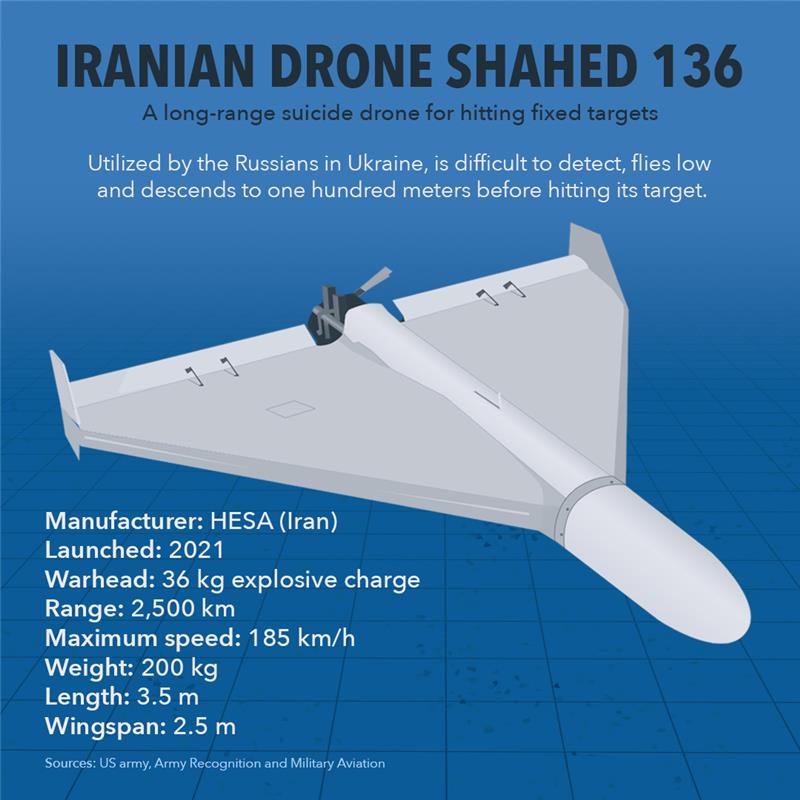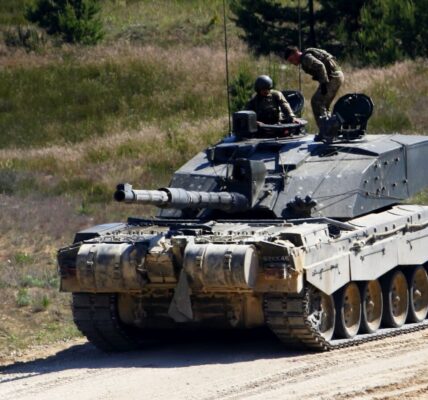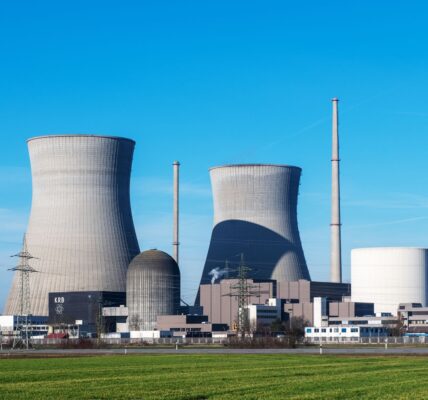Iran is set to become one of the largest suppliers of weapons within the next decade, western intelligence agencies believe.
The Islamic republic sold around 1bn USD worth of weaponry to a variety of countries around the world in 2022/23, three times as much as the previous year.
Tehran has agreed arms deals with Russia, Sudan, Syria, North Korea, and Venezuela, with combat drones being one of the weapons of choice for many pro-Iranian governments.
Thousands of Iranian-made Shahed suicide drones, which carry an explosive warhead and are designed to crash into their targets, have been sold to Russia for use in Ukraine, along with guided aerial bombs and artillery munitions.

Huge weapon sales to the Kremlin have helped transform Iran’s arms industry which has also allowed the Islamic State’s leaders to supply even more weapons to the proxy forces around the Middle East.
Iran has increased weapon supplies to Hezbollah, in southern Lebanon, with drones but also the technology to manufacture them.

The Houthis in Yemen have been using Iranian short- and medium-range ballistic missiles, including the Asif anti-ship ballistic missile and the longer-range Toophan ballistic missile missiles to attack shipping in the Red Sea.
Hamas, the Gaza-based Islamist terrorist group, which launched the October 7th attack against Israel has also been equipped with rockets and small arms used in the massacre.
Iran’s mission to the United Nations has been reported as saying that the country can sell arms to whoever it wishes without restriction.
The mission said: “We provide assistance to the Palestinians on how to attain military empowerment, enabling them to stand independently under siege.”
“Iran faces no restrictions or prohibitions on the purchase and sale of weapons” under international law and United Nations Security Council resolutions, the Iranian mission said.
Iran’s defence industry is effectively controlled by the Islamic Revolutionary Guard Corps, IRGC – one of the most powerful organisations within the country’s political hierarchy. The IRGC also supplies weapons free to allies in what Tehran calls its “Axis of Resistance.”
After the 1980s Iraq war, the IRGC became heavily involved in Iran’s reconstruction and has expanded its economic interests to include a vast network of businesses, ranging from oil and gas projects to construction and telecommunication and weapons manufacture.
According to the charity Action on Armed Violence (AOAV), Iran has managed to develop a growing arms industry despite a vast array of sanctions placed upon it.
In a recent report entitled Iran’s arms industry: expansion and global implications, the charity said: “According to the Iranian regime, “5,000 knowledge-based companies are cooperating with its defence industry to develop innovative weapons.” This includes an estimated 200 to 240 production sites spread across Iran and other countries such as Syria, Tajikistan, and Venezuela. To some, this is a clear demonstration of Iran’s ambition and ability to expand its military capabilities in defiance of the international restrictions imposed on it.
Iranian surface to air missile
“As for the type of arms that have been produced, Iran is believed to have specialised in developing cost-effective ballistic missiles and unmanned aerial vehicles (UAVs). Iranian drones reportedly cost between $20,000 to $50,000 USD, significantly lower than their Russian counterparts which can cost as much as $3 million USD. The most prominent Iranian UAVs include the Shahed and Mohajer line of drones, with latest models being unveiled in 2021 and 2023 respectively. As for ballistic missiles, the Fateh-110, Zolfaghar, and Qiam-1 are among the most notable Iranian heavy weaponry.”
The report added: “The expansion of Iran’s arms industry and its growing export capabilities, especially in the wake of the expiration of UN embargoes, pose significant challenges to global security and human rights. Iran’s proficiency in producing cost-effective ballistic missiles and UAVs, coupled with its history of supplying these arms to various states and armed factions, including those accused of human rights violations, magnifies these concerns. The country’s non-participation in the Arms Trade Treaty further exacerbates the situation, as it operates outside the international regulatory framework designed to prevent the misuse of arms. Consequently, the potential for these exports to contribute to increased violence and civilian casualties in conflict zones remains a pressing issue.
Dr. Iain Overton, Executive Director of Action on Armed Violence, notes, “the proliferation of arms, especially in regions fraught with conflict, not only fuels ongoing violence but also has a devastating impact on civilian populations. The lack of stringent controls and accountability in arms exports can lead to widespread suffering and undermines efforts towards achieving lasting peace and security.”

































































































































































































































































































